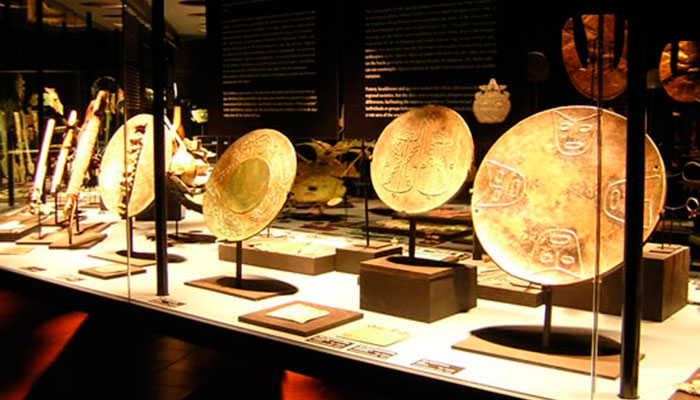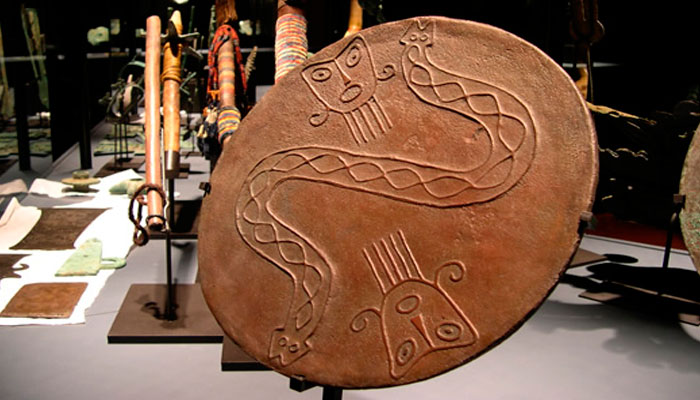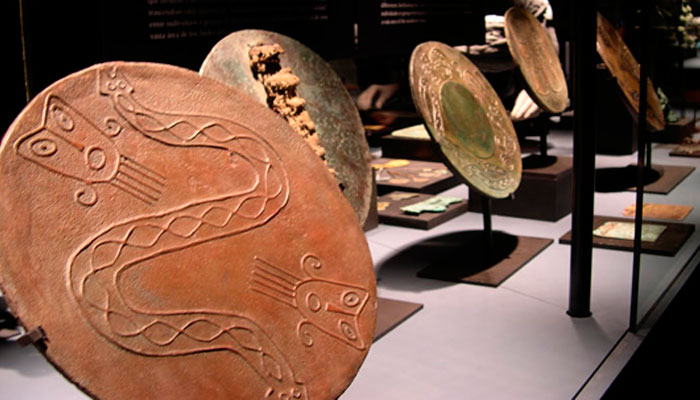The Art of Copper in the Andean World – 2004
- From stone to jewel
- Metal tools
- Chromatic palette of copper
- Metallic sounds and glitters
- Bronze bells
- Metals for taking away life
- Copper on the shaman’s altar
- Copper in the andean iconography
- Metallic bodies
- The face of death
- Food for men
- Food for the gods
- The power of the cailles
- Epilogue
- Galería de fotos
The power of the cailles
Metal plaques have a long tradition in northwestern Argentina. Their origins go back to the Condorhuasi culture around the beginning of our era, continue with Aguada from A.D. 600 to 900 and culminate with the Santa María and Belén cultures from A.D. 1000 to 1500, even lasting up to early colonial times, when they were known as cailles.
The iconography of the Aguada plaques summarized the basic symbols of an ancient southern Andean mythic current, taken up again much later in the Punchao, the gold statue that contained the ashes of the Inka rulers and that presided over Cuzco’s central plaza, the Coricancha. Another type of plaque are the Santa María and Belén bronze disks, that could measure more than 30 cm in diameter and weigh almost 3 kg. Some of them are smooth, but most have one side decorated with snakes, human faces and/or anthropomorphic figures. There are disks with holes on the edges and rings on the backs, probably for stringing threads for hanging. The disks with cut-out zoomorphic figures running along the object’s perimeter are another variation.
Pottery, headdresses and apparel marked the ethnic differences that divided regional societies, but the disks and rectangular plaques transcended such differences, facilitating the coming together or “brotherhood” between individuals or groups belonging to the social and political elite throughout a vast area of the southern Andes.






































